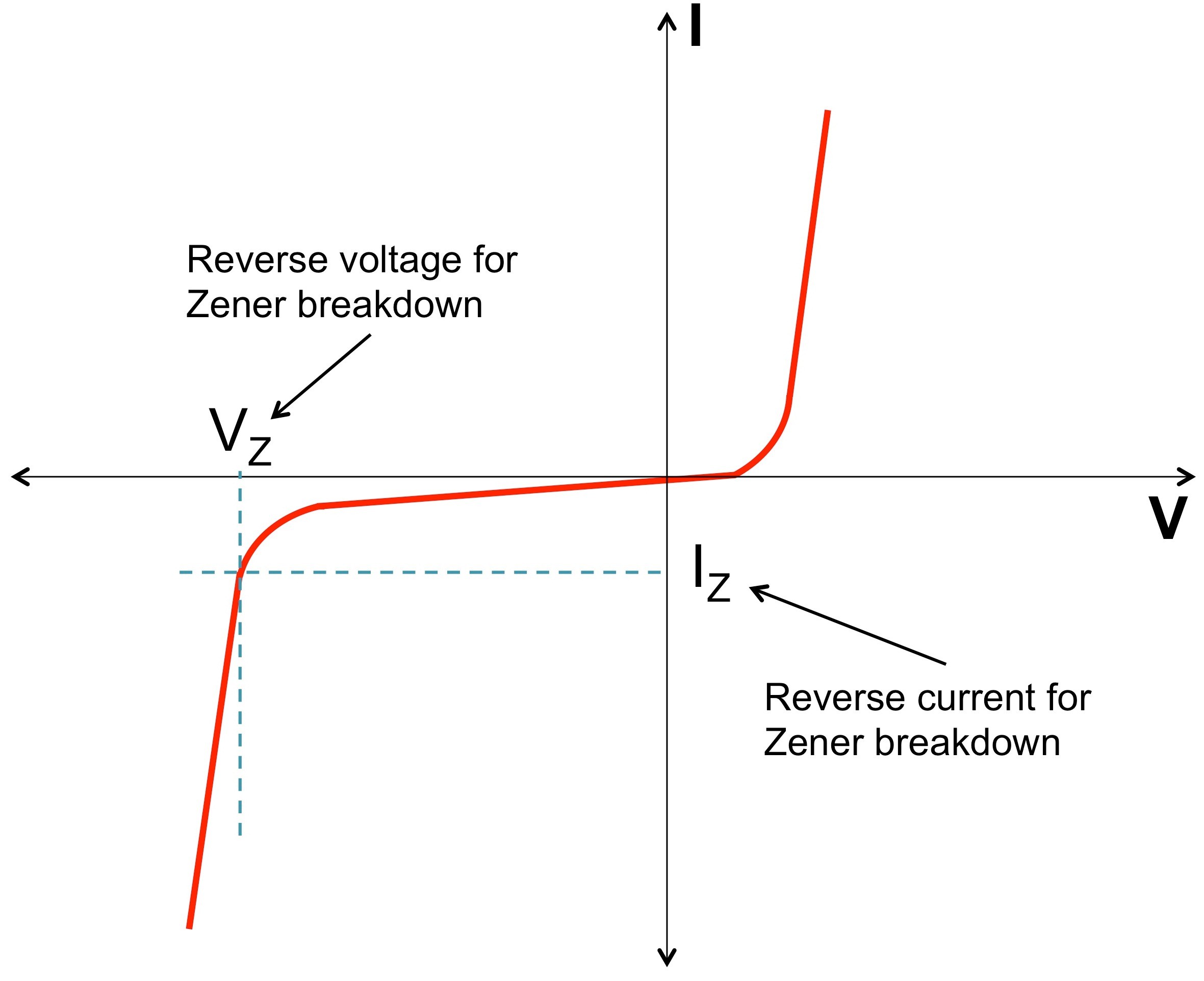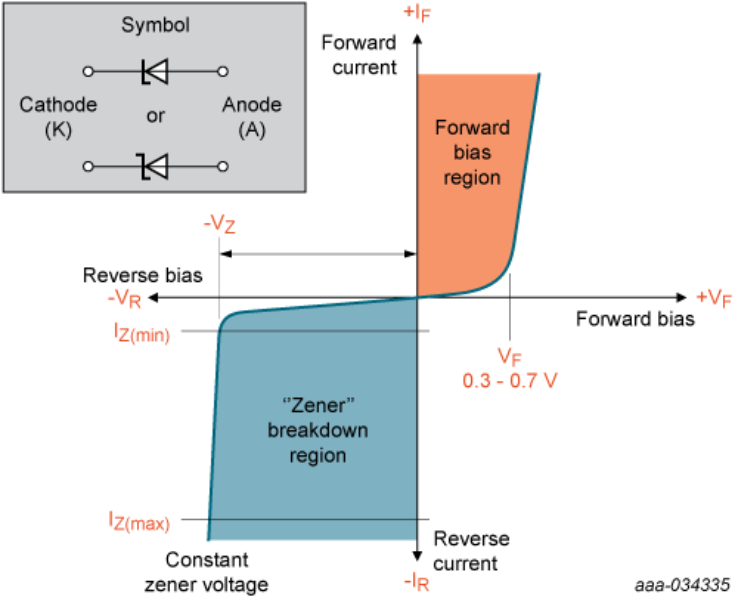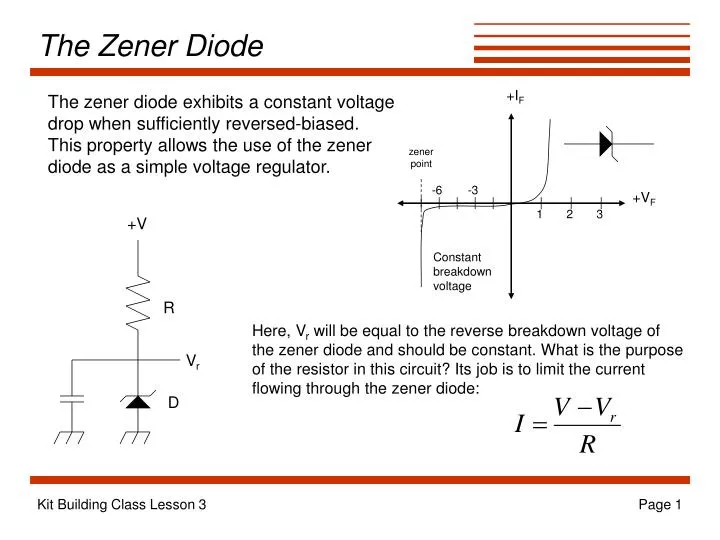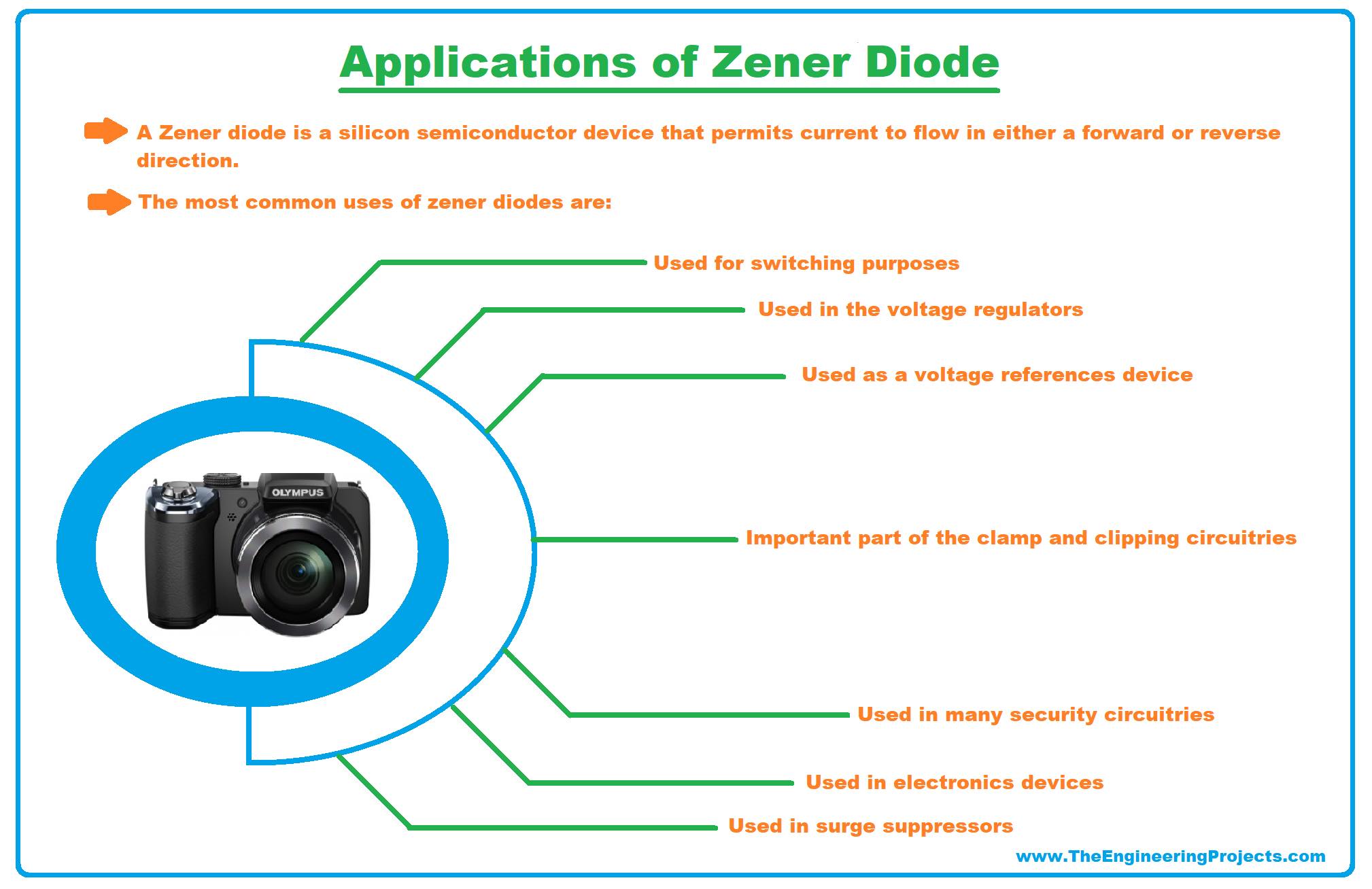ZENER DIODE - Characteristics And Voltage Regulating Device Presentation
| Introduction to Zener Diode | ||
|---|---|---|
| A Zener diode is a type of diode that is designed to operate in the reverse breakdown region. It is primarily used as a voltage regulator in electronic circuits. The Zener diode is named after Clarence Zener, who discovered the Zener effect. | ||
| 1 | ||
| Zener Diode Symbol and Construction | ||
|---|---|---|
| The symbol of a Zener diode consists of a regular diode symbol with two additional diagonal lines. It has a heavily doped P-N junction, which allows it to operate in the reverse breakdown region. The doping levels are carefully controlled during the manufacturing process to achieve specific breakdown voltage characteristics. | ||
| 2 | ||
| Zener Breakdown and Voltage Regulation | ||
|---|---|---|
| Zener breakdown occurs when the reverse bias voltage across the diode exceeds the Zener breakdown voltage. The Zener breakdown voltage is a characteristic property specified for each Zener diode. Zener diodes exploit this breakdown behavior to regulate voltage in electronic circuits. | ||
| 3 | ||
| Zener Diode Characteristics | ||
|---|---|---|
| Zener diodes have a sharp breakdown voltage, meaning they maintain a relatively constant voltage across the diode even with changes in current. They have a low dynamic resistance, allowing them to regulate voltage efficiently. Zener diodes can handle both forward and reverse bias currents, although they are primarily used in the reverse bias mode. | ||
| 4 | ||
| Voltage Regulation using Zener Diode | ||
|---|---|---|
| By connecting a Zener diode in parallel with a load resistor, the Zener diode regulates the voltage across the load. When the input voltage exceeds the Zener breakdown voltage, the excess voltage is dropped across the Zener diode. This helps maintain a constant voltage across the load, even with variations in the input voltage or load resistance. | ||
| 5 | ||
| Applications of Zener Diode | ||
|---|---|---|
| Zener diodes are commonly used in power supplies to provide a stable reference voltage. They are used in voltage regulators, voltage clamps, and overvoltage protection circuits. Zener diodes also find applications in signal conditioning circuits, temperature compensation circuits, and as voltage references for analog-to-digital converters. | ||
| 6 | ||
| Zener Diode versus Regular Diode | ||
|---|---|---|
| Unlike regular diodes, Zener diodes are designed to operate in the reverse breakdown region. Regular diodes are used primarily for rectification purposes, while Zener diodes are used for voltage regulation. The breakdown voltage of regular diodes is generally much higher than that of Zener diodes. | ||
| 7 | ||
| Zener Diode Ratings | ||
|---|---|---|
| Important ratings for Zener diodes include the breakdown voltage, maximum power dissipation, and maximum forward current. The maximum power dissipation rating determines the maximum amount of power the diode can handle without overheating. Exceeding the maximum forward current can lead to permanent damage to the Zener diode. | ||
| 8 | ||
| Advantages and Limitations of Zener Diodes | ||
|---|---|---|
| Advantages of Zener diodes include their ability to provide stable voltage regulation, low cost, and ease of use. However, Zener diodes have limitations such as limited power handling capability and sensitivity to temperature changes. In high-power applications, other voltage regulation techniques may be more suitable. | ||
| 9 | ||
| Summary | ||
|---|---|---|
| Zener diodes are specialized diodes used for voltage regulation. They exploit the Zener breakdown to maintain a constant voltage across a load. Zener diodes find applications in power supplies, voltage regulators, and various other electronic circuits. | ||
| 10 | ||
| References (download PPTX file for details) | ||
|---|---|---|
| "Zener Diode." All About Circuits. www.allabo... Your second bullet... Your third bullet... |  | |
| 11 | ||








